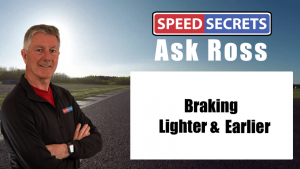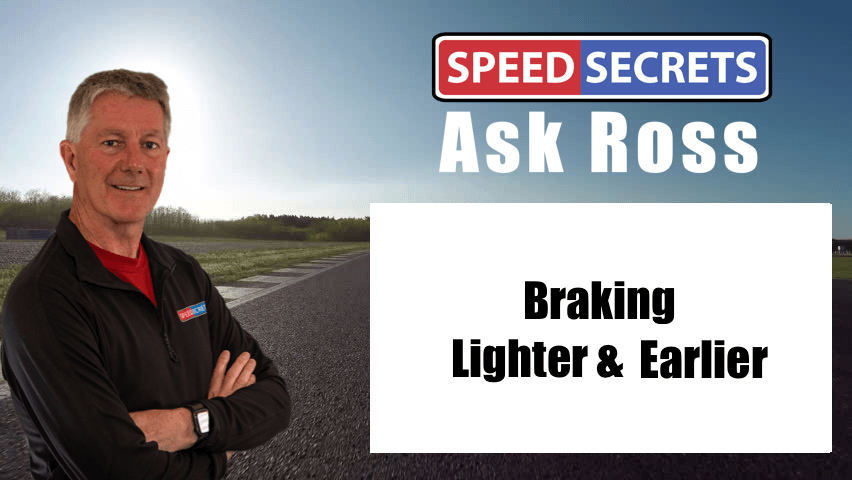 Q: “I’ve heard you talk about braking lighter in the past, and I have questions about that advice. If you started braking lighter at the same place entering a corner, wouldn’t that suggest that you’re not quite at the limit under braking? And wouldn’t that make you slower because you don’t have the car at the limit?”
Q: “I’ve heard you talk about braking lighter in the past, and I have questions about that advice. If you started braking lighter at the same place entering a corner, wouldn’t that suggest that you’re not quite at the limit under braking? And wouldn’t that make you slower because you don’t have the car at the limit?”
A: Yes, braking lighter means you’re not at the absolute limit under braking, but it can still make you faster overall.
Braking lighter usually results in carrying more speed into the corner. If you can maintain an extra 1-2 MPH through the corner and still get back to full throttle as early as before, you’ll improve your lap times. Simple as that. But if you could do that, why wouldn’t you brake a little later and harder?
Lighter braking keeps the car flatter and better balanced, with less load/weight transfer. This means more overall traction, allowing you to carry that extra speed into the corner without negative effects. Sometimes, when you brake later and harder, you kinda stand the car up on its nose, and that means you actually have less overall grip (watch this Why Smooth is Fast video for an explanation of this).
Sometimes, you need to compromise one section of the track for another. Braking lighter might not be the fastest approach for a single corner (and for sure, not all corners), but it can lead to a better overall lap time by optimizing other sections of the track. Remember, the goal is to be fastest through the entire lap, not just a single corner or braking zone. Braking lighter can help you achieve that by maintaining better car balance and carrying more speed through corners.
We tend to think that driving fast is all about braking as late and hard as possible, but I’ve seen almost as many exceptions to this mindset as I’ve seen where it works. In other words, braking a little bit earlier and lighter often leads to faster lap times. And, it’s usually easier on the car, too.

